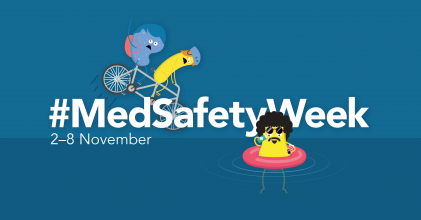No medicine, not even vaccine are 100% safe. There is a certain risk associated with them.
Drug safety cannot be considered as an absolute, it can only be assessed relative to drugs benefits. Safety and risk are always individual depending on with whom, when and conditions the drug interacts.
At the time of marketing (the medicine), the amount of information on risk-benefit especially long term is relatively small and it is often based on selected populations.
For most of the drugs only about 500-3000 participants are studied in clinical trials, for relatively short durations.
Drugs are made available for public use before rare but potential serious reactions have been identified and their probability quantified (like 1 in 5000 or 1 in 15000 etc.,).
Moreover, the adverse event profile of the drug, which is usually well defined in relatively small, carefully controlled, premarketing studies, may not adequately reflect the profile that will emerge with widespread use after approval, for several reasons:
- Study participants may represent a somewhat healthier and select subset of all participants
- They may receive better care than “real-life” patients.
- Study drugs will (of necessity) be given for shorter durations in studies than in post marketing use.
- Neither concomitant medications administered in clinical trials nor comorbidities of study participants will represent all those possible outside the trial setting.
Hence Post-marketing surveillance is essential for developing a full understanding of the balance between benefits and adverse effects.
Reporting side effects can make medicines safer. Every report counts! If you think you are experiencing a new side effect from taking your medication, report it to your healthcare practitioners or use electronic Adverse Drug Reaction reporting platform.
While submitting adverse event reports it is important to provide required information. Every reported information represents an important piece of causal information. Only drug name and event is clearly not sufficient information for establishing causality.
The work done by pharmacovigilance agencies, patients and clinicians to report potential side-effects of medicines is so important.
Pharmacovigilance is all about the safer and more effective use of medicines for everyone, young and old. It covers everything to do with noticing, assessing, understanding, managing and preventing adverse effects of medicines for individuals and populations.
Each report counts as potential causal evidence and what is beneficial for one person might harm another. Because everyone has different risk factors – relating to genetics, other diseases and medication, allergies, social conditions, psychology and so on. We need to know what it is that makes every patient vulnerable to harm; when harm occurs, it needs to be added to the body of knowledge that will influence how medicines are used in the future.
#MedSafetyWeek #EveryReportCounts


Leave a Reply